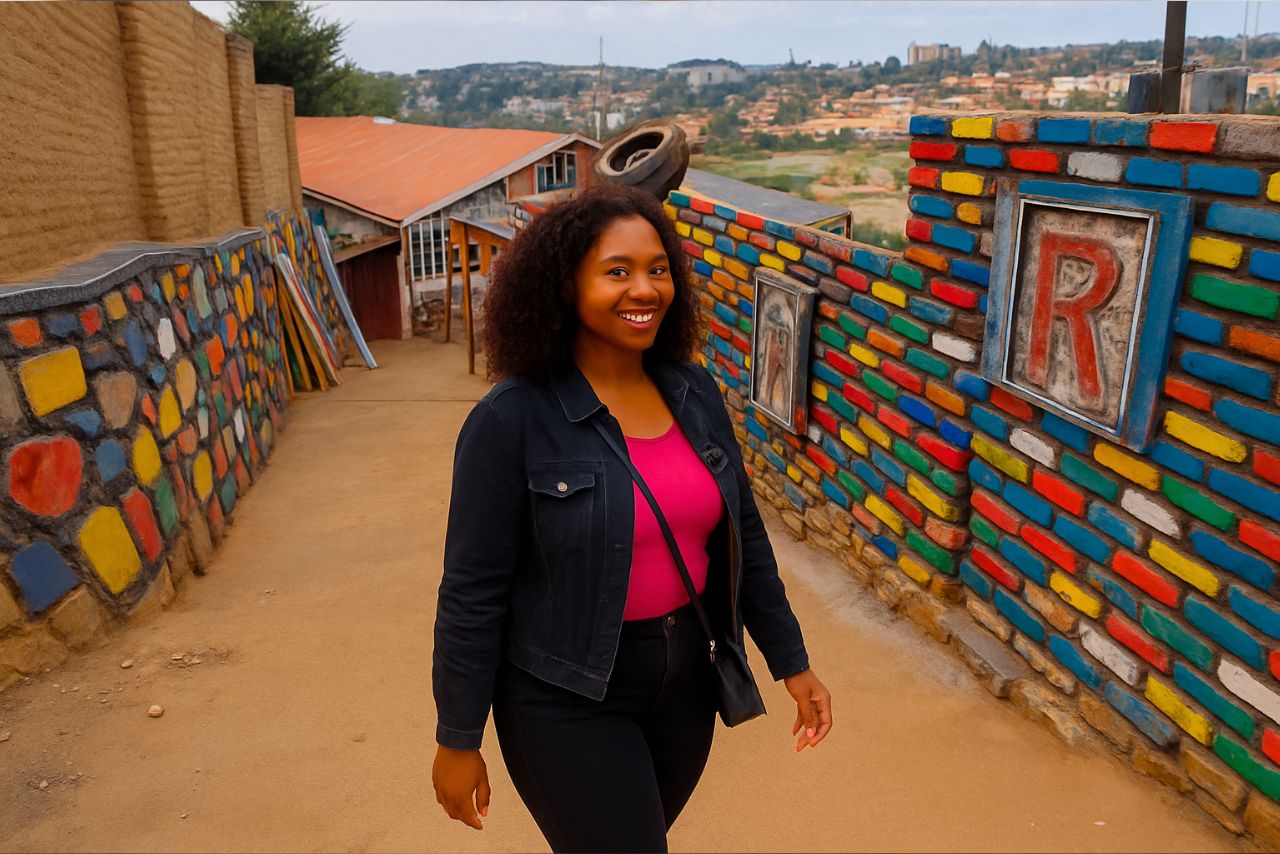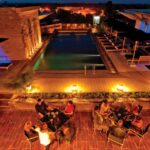Kigali’s nickname, the City of a Thousand Hills, can feel like marketing poetry until you land and see the ridgelines unfurl beneath a silvery dawn.
The Rwandan capital climbs, dips and curls so gracefully that wheels, not feet, rule the rhythm of daily life.
We set ourselves a one-day, one-note challenge: stretch a single crisp Benjamin to sample nature, adrenaline, history, markets, and street food without ever feeling shortchanged.
Current exchange rates hover around RWF 1,440 to US $1, so our target purse sat just under RWF 144,000 for two travellers.
A spoiler? Kigali rewards travellers who think local first, like moto‑taxis over sedans, market stalls over malls, and open‑air cafés over hotel buffets. The result was a day so packed we needed the hills to slow us down.
Below is the exact play‑by‑play on how you can experience Kigali on $100 budget. This includes every ride, bite, and admission organised as mini itineraries you can shuffle to suit your own pace.
How to Explore Kigali on $100 Budget
Discover how far $100 can take you in Kigali with this 24-hour test-run. From food and transport to accommodation and local experiences, see what you can really buy in Rwanda’s vibrant capital on a budget.
Moto‑Taxi Hop to Nyandungu Eco‑Park

The cheapest thrill in Kigali is the whoosh of a moto‑taxi weaving effortlessly through pre‑rush‑hour traffic. Fares start around RWF 500–1,500 for short hops, but airport drivers may ask a little more.
For RWF3,000, which is about $2, we were able to negotiate a cruise from Kanombe Airport to Nyandungu Eco-Park that would take 8 kilometers and include helmets.
With fuel prices up, some drivers have nudged their meters this year, so always confirm the fare before you swing a leg over.
Nyandungu is a 121‑hectare wetland reborn as Kigali’s favourite outdoor classroom. Foreign visitors pay RWF 5,000 to enter; residents pay RWF 3,000; and locals pay RWF 1,000.
For RWF7,000 each, we chose to ride electric scooters for an hour and flew past reed beds full of weaverbirds.
Even though the streets of this city are known for being clean, this park feels wilder than anywhere else downtown, and the air smells like eucalyptus instead of exhaust.
Fazenda Sengha Adventure Park

Another RWF 5,000 moto ride spiralled us up Mount Kigali to Fazenda Sengha, the capital’s outdoor playground.
The “Delight Package” had two ziplines and three rounds of archery. During the week, it cost RWF20,000, and on the weekends, it cost RWF26,000 per person.
After picking weekday rates, clipping in, and flying 100 meters above a eucalyptus valley, we used straw bale targets to test our aim.
Even though our adrenaline was still high, we stopped at the on-site café (RWF 3,000) for a cold pineapple juice spiked with Akabanga while Kampala kites flew above.
From the top of the hill, you can see the whole city. This is proof that cheap days don’t have to mean cheap memories.
Mid‑Day Fuel at Java House, Remera

Hunger struck right after the descent, so we grabbed a quick RWF 3,000 moto to the nearest Java House branch.
Grilled chicken breast with rice, vegetables and bottled water came in at RWF 11,200 (menu mains range between RWF 9,800 and RWF 13,500.
We shared a plate because the portions are big, and then we stayed for a while to geotag our morning activities over the free Wi-Fi.
To save money, split main courses (the staff is used to it) and switch soda for filtered water that is safe to drink from the tap, which can be asked for. These small options kept the lunch line item below $8.
Bargain‑Hunting at Kimironko Market
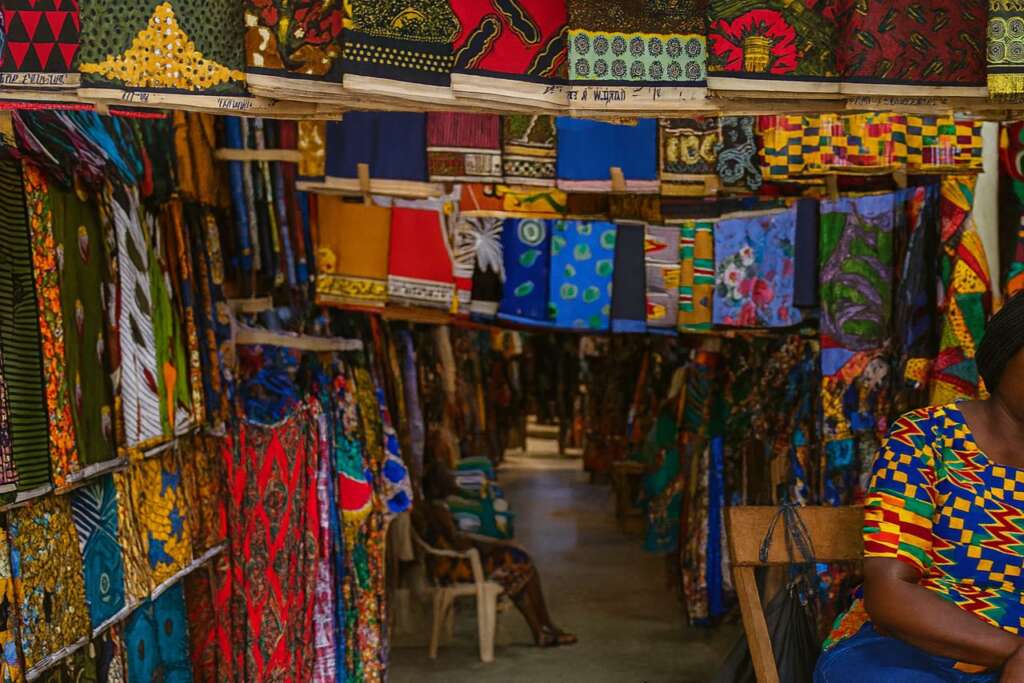
A RWF 1,500 moto zipped us east to the colour‑drenched corridors of Kimironko Market. Here, tailors hawk three‑metre kitenge bundles beside piles of passionfruit and carved wooden spoons.
There are no set prices; however, we were able to get two hand-woven sisal keyrings for RWF6,000, along with a free Kinyarwanda language lesson from the vendor.
Bring 1,000- and 2,000-franc bills with you because sellers rarely break 10,000s. A polite “Murakoze cyane” (thank you very much) will often get you that last discount.
Kigali Genocide Memorial Reflection
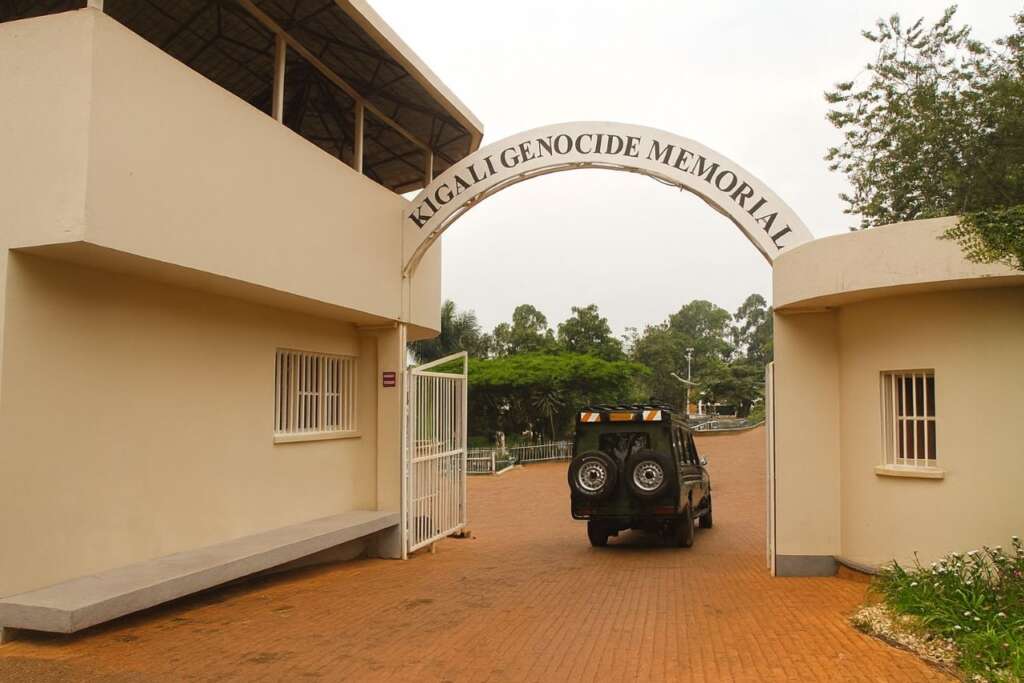
No Kigali itinerary is complete without paying respects at Gisozi’s Kigali Genocide Memorial. Entry remains free; donations keep educational programmes alive.
We put RWF5,000, which is about $3.50, in the box, which was a small act of kindness for a place where the bodies of over 250,000 victims are kep.
The curated exhibits are emotionally demanding; allow at least ninety minutes and dress conservatively (covered shoulders and knees).
Sunset Cappuccinos at Eagle View Lodge
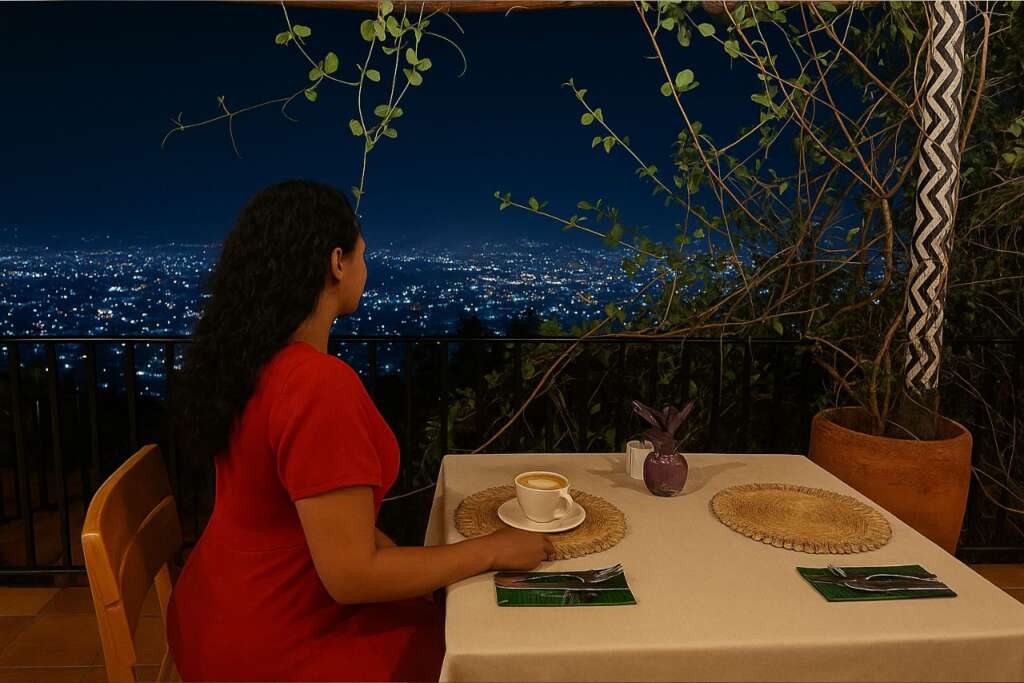
With hearts heavy and heads full, we flagged down another RWF 1,500 moto to Eagle View Lodge, a hillside café‑guesthouse famed for its wraparound terrace.
Two foamy cappuccinos cost RWF 7,000 total, and the view delivered a citywide light show as minibus headlights traced ribbons across distant ridges.
Nightfall in Kigali arrives softly, the horizon smudging from amber to indigo in minutes.
Street‑Food Safari on KN 4 Avenue

After dark, the downtown charcoal grills ignite. We wandered past sizzling goat brochettes (averaging RWF 800–1,500 each) and stacks of fresh chapati (RWF 200).
For RWF 10,500 we demolished five skewers, two chapatis, a mound of ibijumba (fried sweet‑potato wedges) and mugs of spiced African tea strong enough to rattle spoons.
Street‑side etiquette: pay when your plate arrives, watch for stray sparks, and use the lemon‑salt station to disinfect fingers before digging in.
Final Tally: 24 Hours, 12 Experiences, $94 Spent
Essential Dos, Don’ts & Money‑Saving Tips in Kigali
Do ride motos, but insist on a helmet. Legit drivers carry a spare; if the strap is frayed, hail another. Fares are metered only on a few regulated bikes, haggle lightly, smile often.
Do carry mobile money (MTN MoMo or Airtel Money). Street vendors increasingly accept tap‑to‑pay codes, sparing you wads of cash.
Don’t photograph police or military posts. Security is tight; cameras cause unwanted attention.
Do dress modestly at the Genocide Memorial. Sleeveless tops feel disrespectful; bring a light scarf if you’re in summer clothes.
Don’t drink tap water untreated. Kigali’s supply is cleaner than many capitals, yet bottled water costs under RWF 500; invest.
Do time your visit for Sunday car‑free mornings. The city cordons off major arteries, turning roads into pop‑up bike lanes and dance floors.Don’t assume card machines work. Power blips happen. Always keep RWF 20,000 in small bills as backup.
Key Takeaways
This is Kigali on $100! We proved a single $100 note can unlock eco‑parks, adrenaline rushes, heritage sites, café culture and sizzling street dinners, all in 24 hours and with change to spare.
Kigali rewards curiosity more than cash. Talk to drivers, greet vendors, learn three phrases of Kinyarwanda and the city will open doors no guidebook lists.
Next time you’re planning a stopover in East Africa, don’t forget to mark Rwanda’s capital city on the map. The hills may take your breath away, but the prices won’t break the bank.

